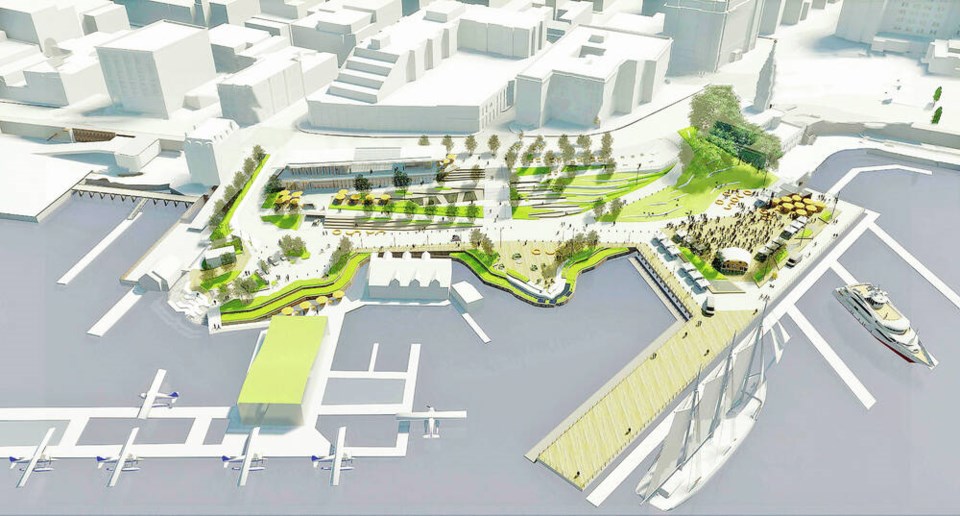Times Colonist
Victoria council unanimously voted Thursday to come up with a revised plan for the Ship Point seawall, site remediation and landscape improvements, before tackling a new detailed design for a makeover of a site dominated by parking lots for decades.
It may not be the bold and impressive first step she had been hoping for, but it was enough to light a fire under Mayor Marianne Alto.
“I love this all and I hope you do it faster than you can imagine,” Alto told city staff just before the vote.
“I think the overall message here is that it may be a small first step, but an incredibly necessary one.”
Council also directed staff to shift the emphasis on the space toward uses such as shoreline access, pedestrian space, greenspace, active transportation, arts, patios, and recreational and other amenities, while significantly reducing the amount of parking and paved areas.
Staff will also take on finding new funding sources for the project.
When the Ship Point Master Plan was first unveiled in 2018, it was estimated the makeover would cost $65.5 million.
Alto said she would not be surprised if the cost is now in excess of $100 million.
Alto said Thursday’s decision is the first step in bringing the master plan back to life, after it had been shelved five years ago.
That concept included terraces and sloped lawns between Wharf Street and what is currently a parking lot, a three-storey pavilion that would front onto Wharf Street and look out over the Harbour Air terminal, plenty of green space, public seating, cafés and a grand staircase down from Wharf Street to the Ship Point promenade.
The early drawings also showed a picnic zone and a festival site near the main pier.
But before any of that happens, the seawall and harbour pathway require work. A city staff report indicates the seawall requires stabilization and upland portions of the site need remediation.
The report also says the review is a chance to revise the plan based on sea-level rise and modern shoreline approaches.
Coun. Chris Coleman warned his colleagues not to make plans for all kinds of future phases of development, as the required remediation may change the playing field.
“We shouldn’t try and plan the design of what’s going to be there until we actually know what the footprint is that we’re working with,” he said.
>>> To comment on this article, write a letter to the editor: [email protected]



